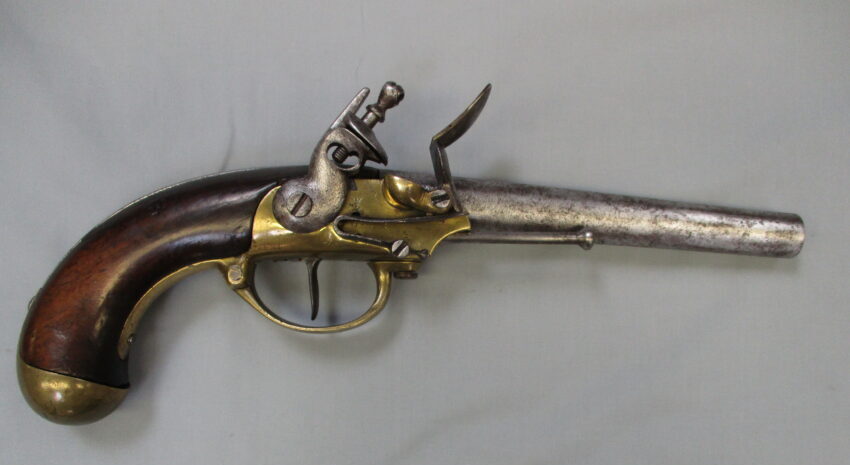Christina L. Simms, Conservator Objects and Sculpture, recently completed a conservation treatment of a Model 1777 pistol at McKay Lodge Conservation Laboratory, just outside of Cleveland, Ohio.
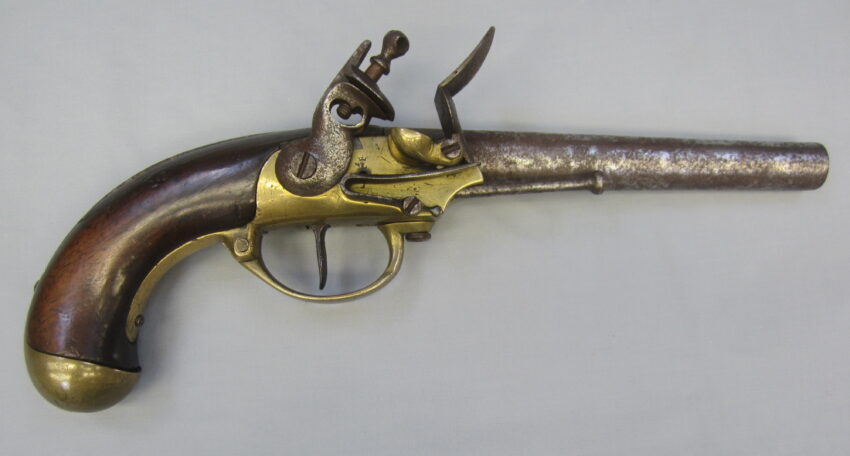
Many good things come from France, including the first Model 1777 flintlock pistol. The Model 1777 pistol was designed in the late 1770s, and it was manufactured until 1792 in three French cities: Saint-Etienne, Charleville, and Maubeuge. Between the period of 1788 to 1792, it is estimated that approximately 145,000 were fabricated. And one of those Model 1777 flintlock pistols made its way to the McKay Lodge Conservation Laboratory for conservation treatment in 2020.
The French Model 1777 flintlock pistol is currently in the care of the National Society of the Sons of the American Revolution (NSSAR). This is the second time that McKay Lodge Conservation Laboratory has had the privilege of treating an artifact from the NSSAR collection. Earlier this year, Conservator Simms performed the conservation treatment of an American Revolution Fowler, which had an exciting history.
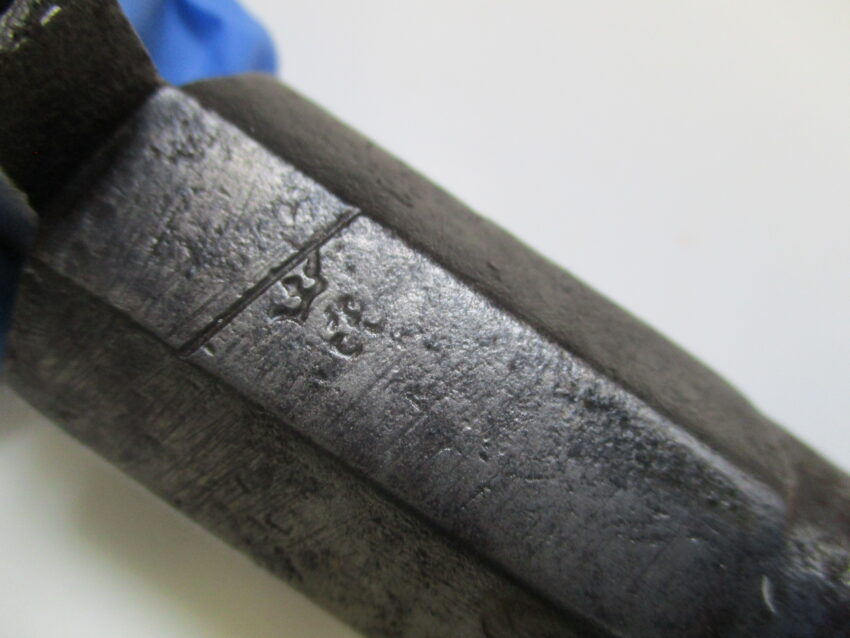
While provenance of the pistol is unknown, the firearm does have distinctive stamps, likely proof marks, located on different components of the object. These stamps can help identify the country and time period. The Model 1777 also served as the model for the United States Model 1799, the first official model of firearm adopted in the States.
The pistol is in excellent structural condition, but it suffers from corrosion of the metal components. The condition issue is not unusual for this type of object. Before conservation treatment of the Model 1777 pistol, conservator Simms ensured the firearm was not loaded or ready to fire in any capacity. The flintlock mechanism firearm was fully disassembled for treatment, apart from the flash pan, main spring, and frizzen.
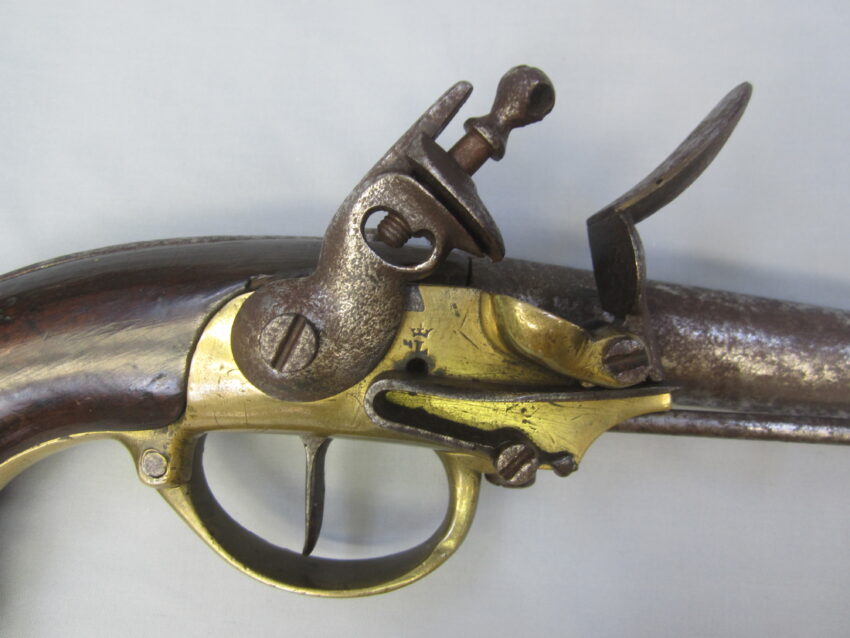
For treatment of the Model 1777 pistol, the barrel, backstrap, ramrod, hammer, frizzen, screws, trigger and all internal ferrous alloy (likely steel) internal components were manually cleared of corrosion with a scalpel, glass bristle brush, and abrasive paper. Grime and friable rust were further removed with solvents.
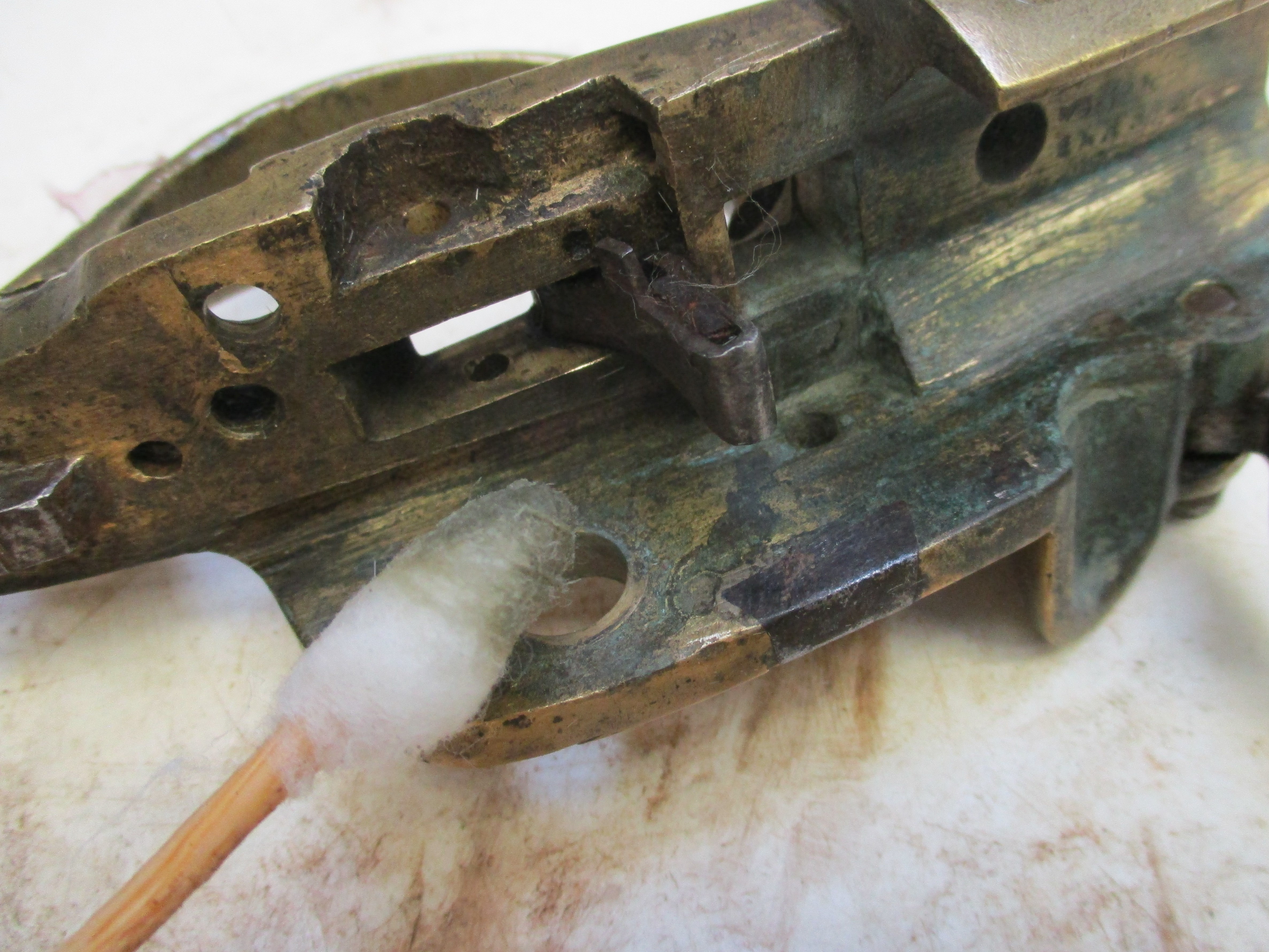
Areas such as crevices, the interior of the barrel, frizzen spring, interior face of the hammer jaws, and screw holes were treated with a dilute acidic solution then cleared with water to neutralize the acid. The acid treatment creates a passive corrosion layer but this type of treatment must be done carefully since the acid can artificially darken the color of the metal.
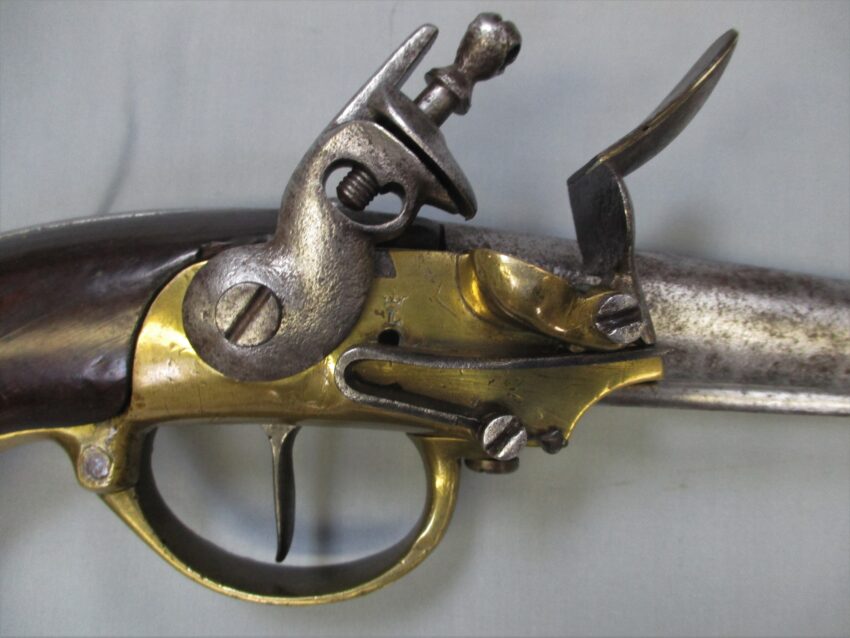
Copper alloy components were also cleared of corrosion as far as possible, but with less abrasive methods since the metal is softer than steel. They were then coated with a cellulose nitrate coating, which can be readily removed with common solvents in the future if needed.
After the conservation treatment of the Model 1777 pistol, the firearm is free of corrosion and a protective coating was applied to the copper alloy components. Treatment improved the overall stability and appearance of the object.
